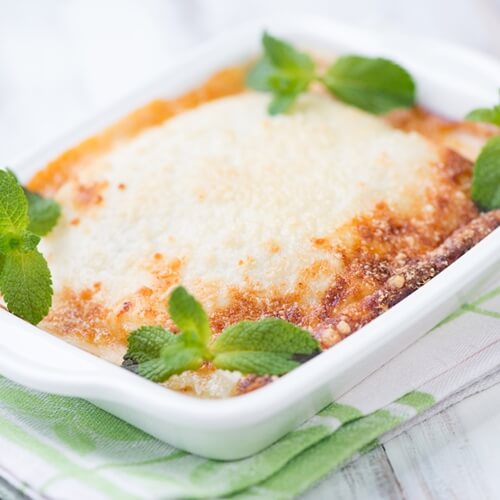Lasagna in 100 layers
When culinary courses online cover fresh pasta, it is unlikely that the students taking those courses ever attempt a lasagna dish that requires 100 layers. In fact, they may not even endeavor to make a fresh pasta lasagna, because the traditional Italian dish has been simplified to be made with strictly dried pasta sheets. At Del Posto in New York City, executive chef Mark Ladner has done what no one else has done before, built a towering hybrid of the American (made with dried pasta and sauce) and Italian lasagna (made with fresh pasta and no sauce).
Towering taste
Before any chefs go out and try to recreate this 100 layer lasagna, know that those layers are really comprised of only 50 sheets of fresh pasta in between another 50 layers of sauce. Regardless, this handmade restaurant special has become a Del Posto customer favorite.
“The 100 Layer Lasagna represents everything that Mark, Mario, Joe, Lidia, and Brooks are trying to do at Del Posto — that is, show the world that Italian food belongs in the realm of fine dining,” Greg Morabito, an Eater NY editor, told Eater. “Most people think of lasagna as a familiar, homey dish, but at Del Posto, it’s a show-stopper.”
Sensitive palette
The dish was first released in 2009, after a Mario Batali party for which it was designed. Ladner said the idea for the dish came from the Hans Christian Anderson tale “The Princess and the Pea.” Much like the many layers of mattresses on which the princess slept, this lasagna holds a singular surprise, a pea. Beyond the pea, Ladner breaks from fiction and combines a few different lasagna trends to create his signature meal.
In the years since the dish was placed on the Del Posto menu, the recipe has been molded and perfected. The recipe’s pasta is paired with a traditional Bolognese. The pasta itself is a fresh egg pasta made from semolina flour, double zero flour, olive oil and eggs (with extra egg yolks). The addition of extra yolks came about because the pasta layers were so thin that they were difficult to work with, and the extra eggs give the pasta a bit of elasticity, as well as giving the final product a singular flavor.
The Bolognese is made with veal and pancetta, which is then mixed with a simple marinara sauce and a besciamella. One cook in the Del Posto kitchen is solely responsible for the product. It has survived for five years on the elite restaurant’s menu, and it may be difficult to say whether this is because of the taste or the enormous amount of layers.
“Well, I started with twenty, and just kept going,” Ladner told New York Magazine. “One hundred seemed like a nice even number.”


